I was outside and I heard a strange motor sound.
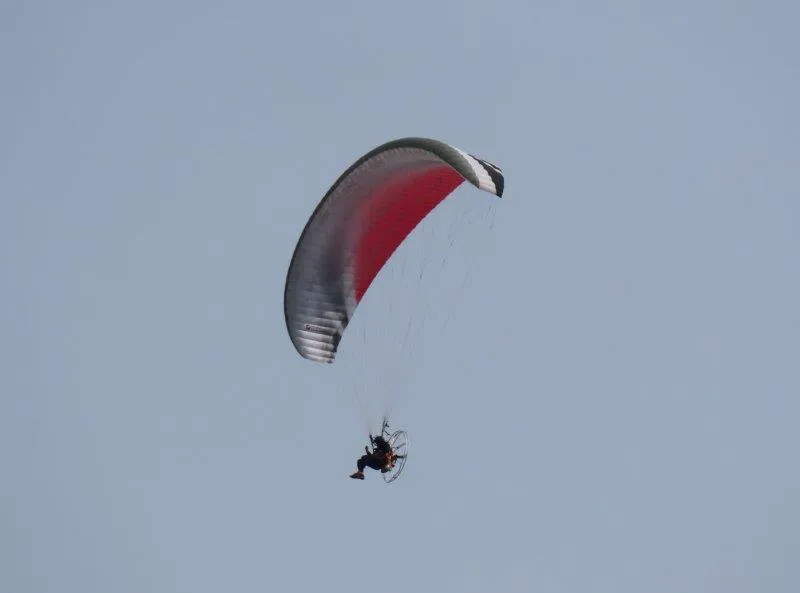
At first I thought it was a power tool, but no, my eyes traveled heavenwards.
Greetings all and I want to show you some guys on powered gliders today.
Amazing to see how relaxed the pilots are and I think it must be exhilarating to fly like a bird. Okay not really a bird, as it is a manmade concept with limits, but still the freedom of flying is there.
So come and tell me what you think of this.
This guy was taking an airborne ride across our town, high up of course.
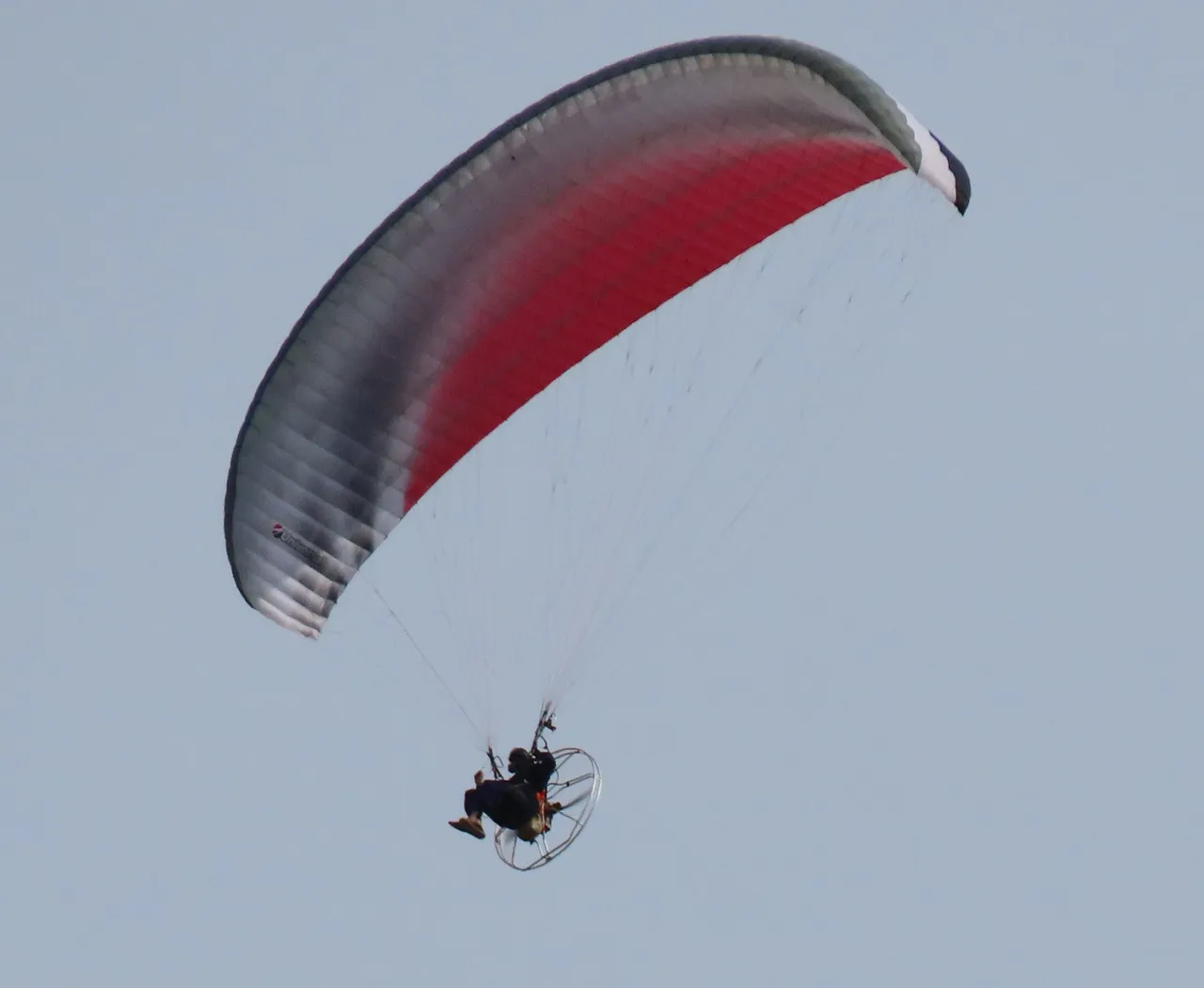
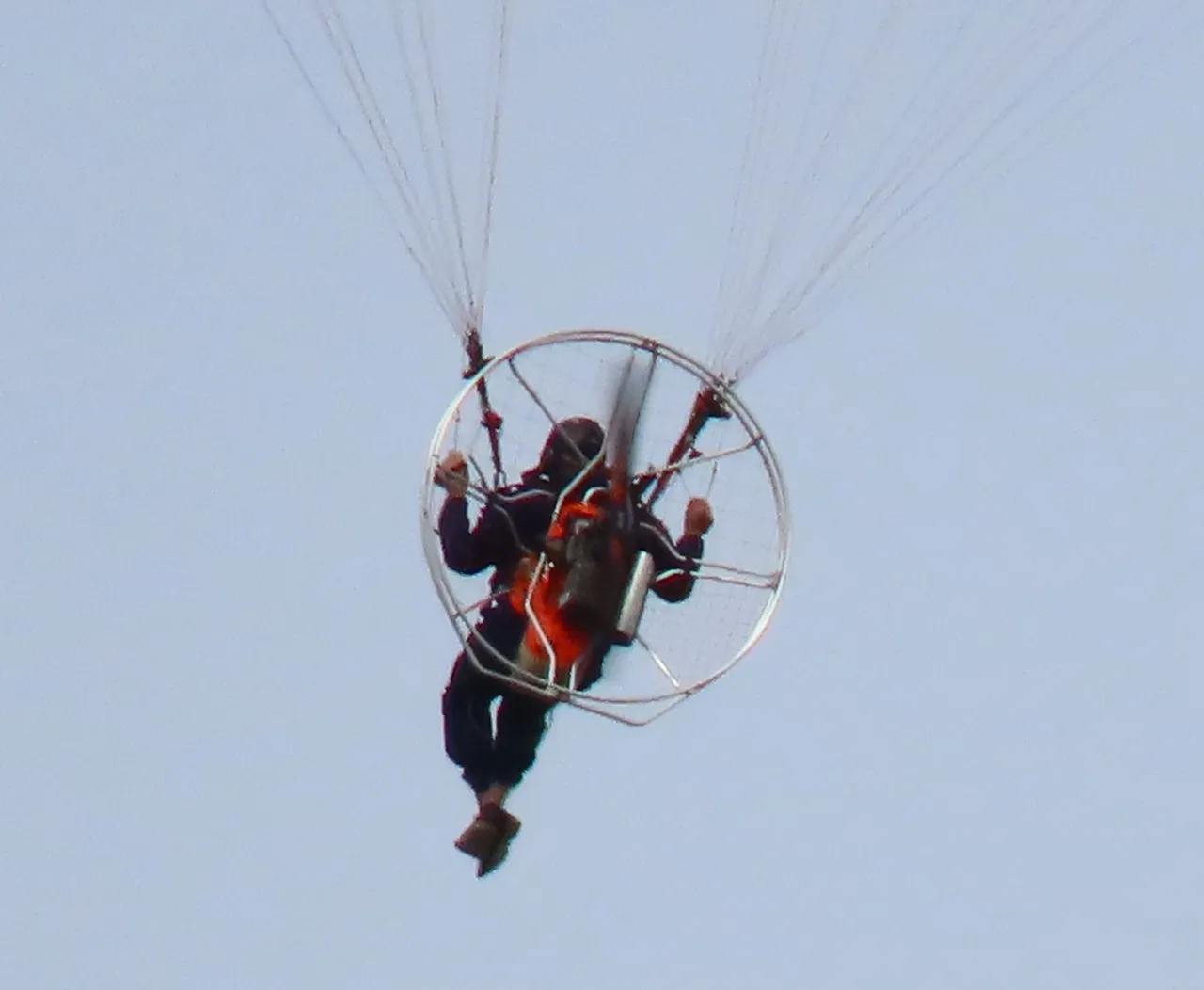
What a co-incidence, as two days ago I saw some others above the ocean when I was taking some Flamingo shots at a lake (posted).
Here are the gliders below.
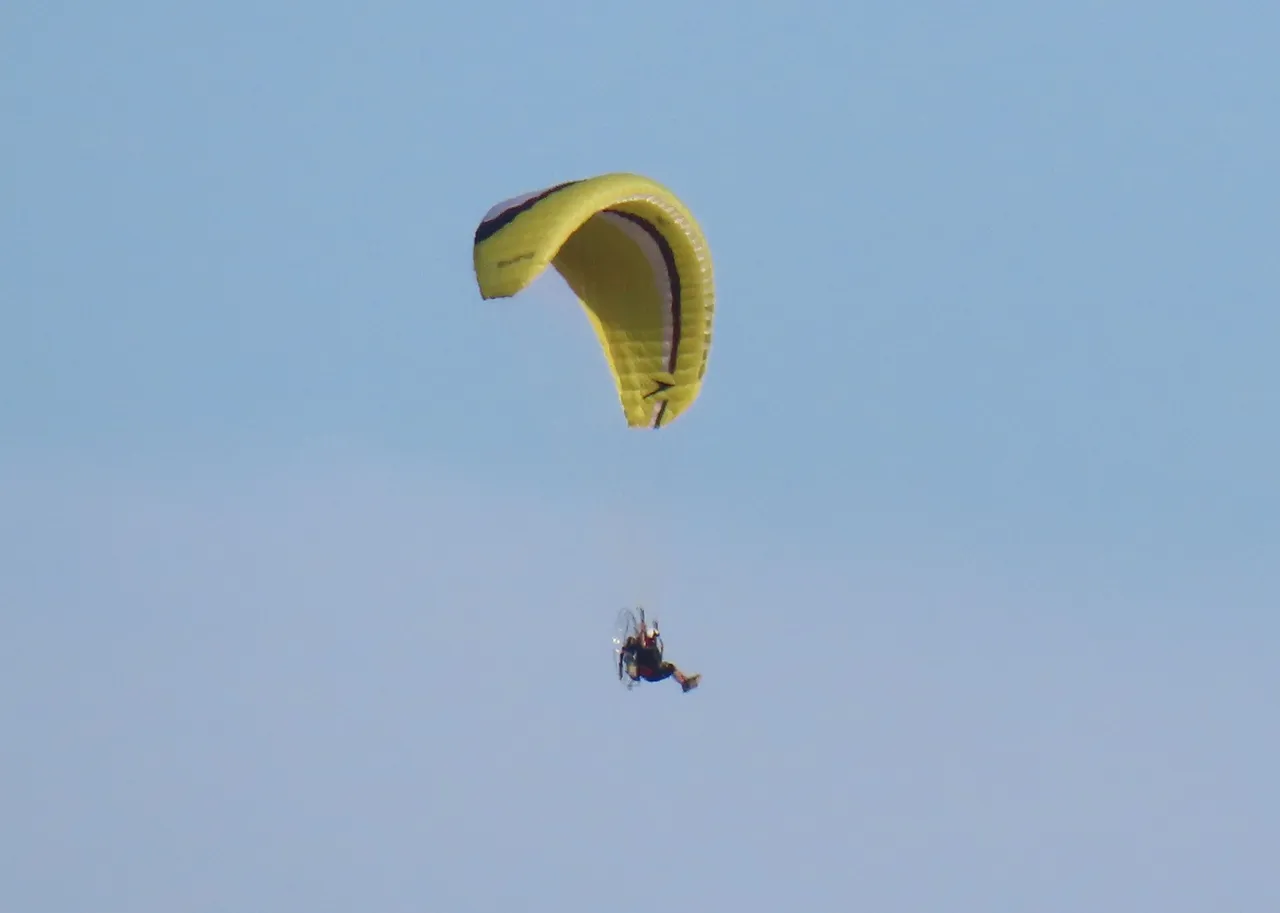

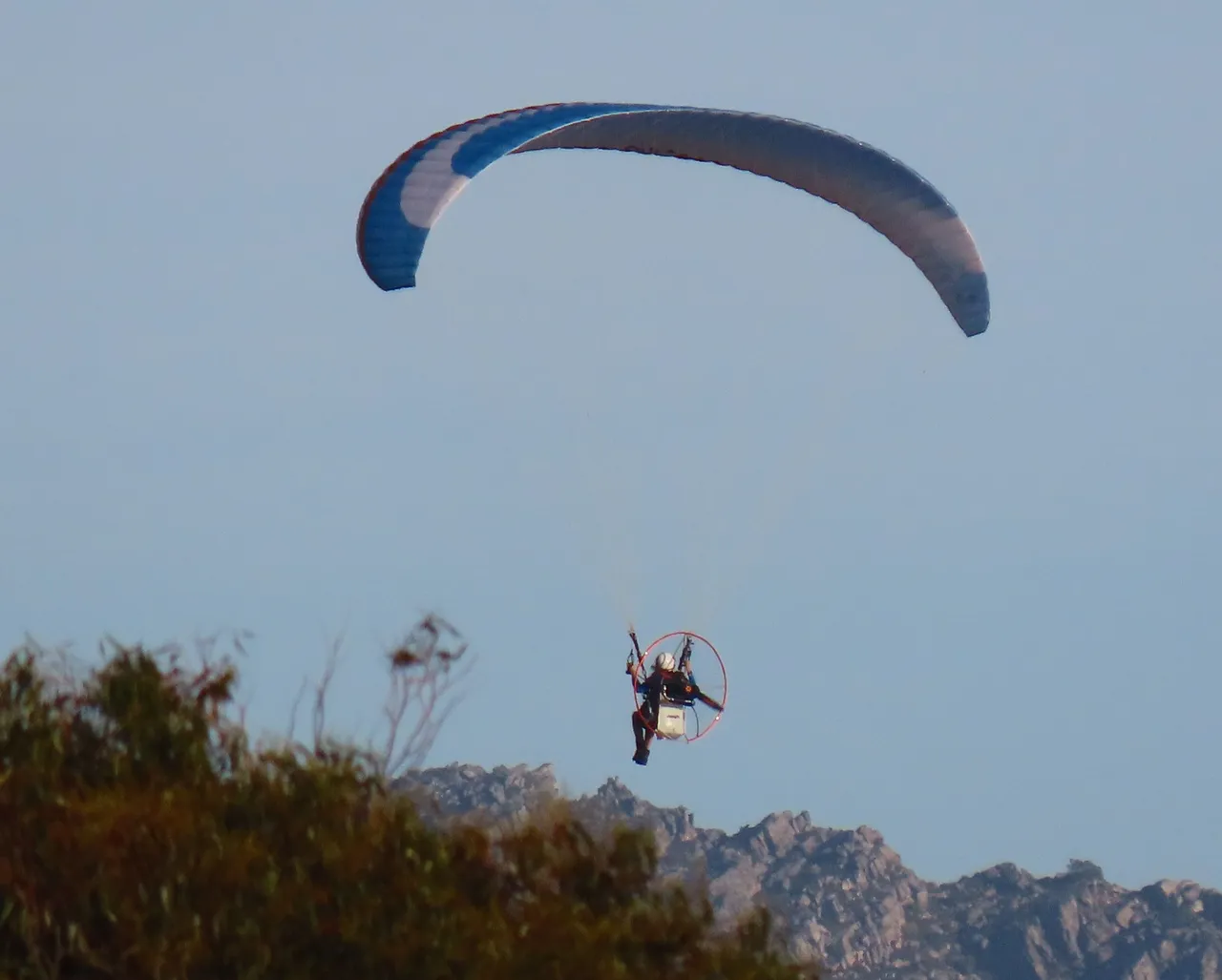

So amazing to be able to fly and I blame the birds for mankind's determination to invent flying things.
The gliders are called PPG's and here's more information.
Powered paragliding, also known as paramotoring or PPG, is a form of ultralight aviation where the pilot wears a back-pack motor (a paramotor) which provides enough thrust to take off using a paraglider. It can be launched in still air, and on level ground, by the pilot alone — no assistance is required.
In many countries, including the United States, powered paragliding is minimally regulated and requires no license. The ability to fly both low and slow safely, the "open" feel, the minimal equipment and maintenance costs, and the portability are claimed to be this type of flying's greatest merits.
Powered paragliders usually fly between 15 to 50 mph (24 to 80 km/h) at altitudes from 'foot-dragging' up about to 18,000 ft (5,500 m) or more with certain permission. Due to the paramotor's slow forward speed and nature of a soft wing, it is risky to operate in high winds, turbulence, or intense thermal activity, especially for inexperienced pilots.
SOURCE
I hope that you have enjoyed the pictures.
And That's All Friends.
Photos by Zac Smith-All Rights Reserved.
Camera: Canon Powershot SX70HS Bridge camera.
Thank you kindly for supporting a post on behalf of @papilloncharity